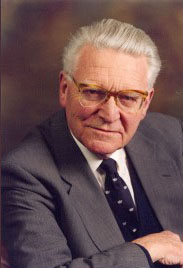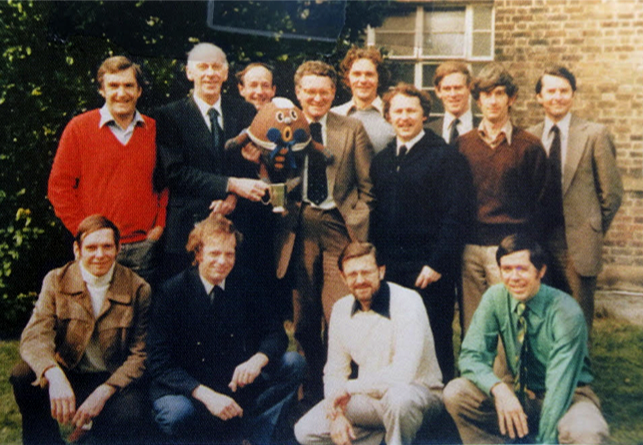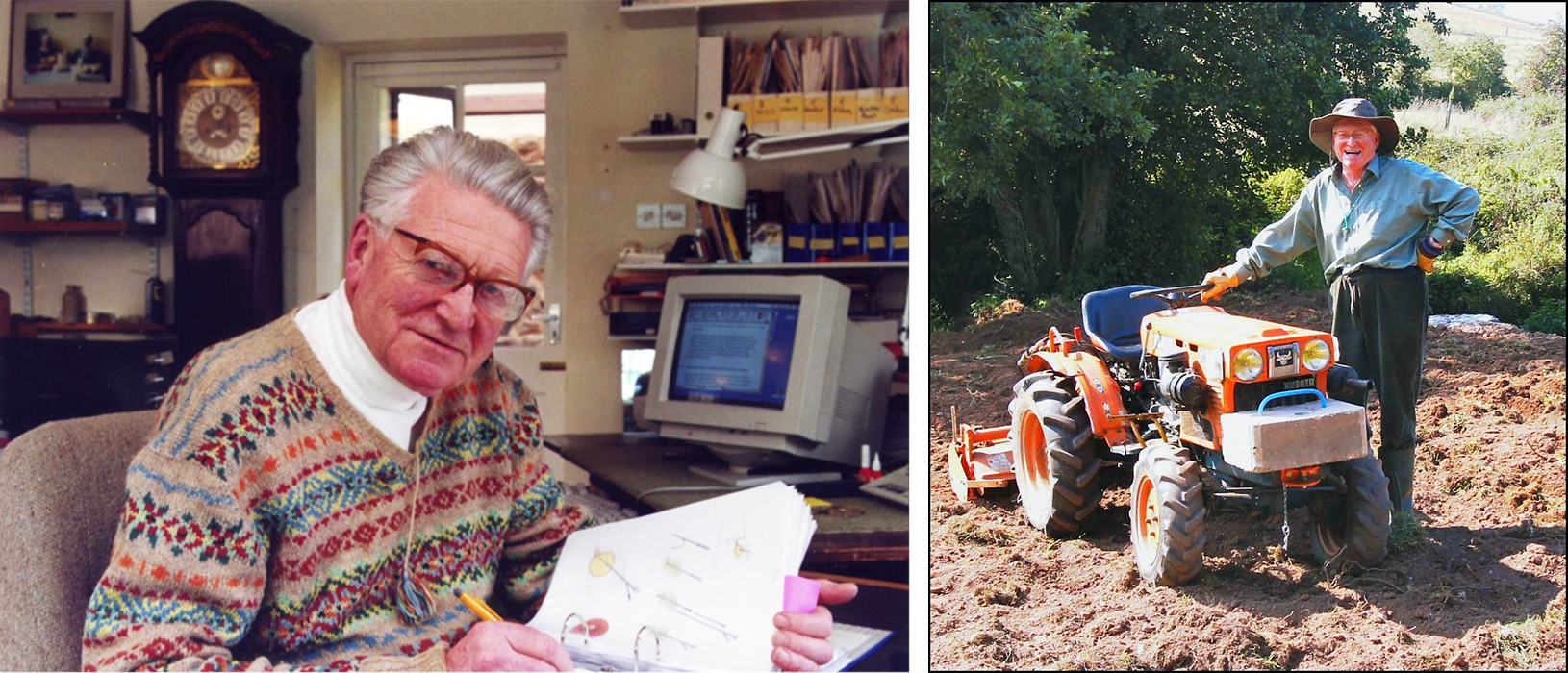Richard Turner Warwick CBE
1925 - 2020
Obituary by Chris Chapple & Jonathan Goddard
 Urologists have always been innovators and British urology has been lucky to claim quite a few. On Saturday 19 September 2020, Richard Turner Warwick, one of urology’s most famous innovators, passed away at the great age of 95.
Urologists have always been innovators and British urology has been lucky to claim quite a few. On Saturday 19 September 2020, Richard Turner Warwick, one of urology’s most famous innovators, passed away at the great age of 95.
Richard Trevor Turner Warwick (RTW) was born on 21 February 1925. His father, William, was a Consultant Surgeon at the Middlesex Hospital, his mother, Joan (née Harris), also a doctor, was a Member of the Royal College of Physicians and specialised in women and children's welfare clinics in the poorer quarter of London’s East End. His father, according to RTW, had "an enquiring mind", his grandfather - a dentist - was a skillful woodworker & silversmith, and his mother was quite an able mechanic; she taught young Richard how to strip down and reassemble a motor car engine before he was ten. Under these influences, Richard became fascinated in how things were made and how they functioned and developed, mechanical skills that were to serve him well in the future. Whilst at school (Bedales in Petersfield) he built a small twin cylinder steam engine out of spare pieces of metal and bits of brass which he put it into a wooden boat. I have seen this small model, the engine is beautifully crafted and it clearly worked, the wooden frame however, was unpainted and undecorated. He was interested in the practical functioning of his model, not how pretty it was! Whilst still at school, albeit as a senior student, he managed to join the local Home Guard, which allowed him a valuable petrol allowance for his motor cycle.
 In 1942, he started his medical training at Oxford University. He was captain of Oriel College Boat Club, rowing in the Varsity Boat Races in 1944 & 1945 and, as President of the Oxford University Boat Club (pictured right), after bringing the Boat Race back from Henley to the Thames, he rowed in the winning 1946 crew. Although Oxford degree courses were foreshortened in wartime, Turner-Warwick won the honour of taking an academic third year in Natural Science. His future wife Margaret (Moore) was a medical scholar in the year below at Lady Margaret Hall; so, he stayed on for a fourth research BSc year in neuroanatomy.
In 1942, he started his medical training at Oxford University. He was captain of Oriel College Boat Club, rowing in the Varsity Boat Races in 1944 & 1945 and, as President of the Oxford University Boat Club (pictured right), after bringing the Boat Race back from Henley to the Thames, he rowed in the winning 1946 crew. Although Oxford degree courses were foreshortened in wartime, Turner-Warwick won the honour of taking an academic third year in Natural Science. His future wife Margaret (Moore) was a medical scholar in the year below at Lady Margaret Hall; so, he stayed on for a fourth research BSc year in neuroanatomy.
RTW became a clinical student at The Middlesex Hospital where he obtained the Senior Broderip Scholarship and qualified in 1949. He had a very varied and extensive training in multiple medical and surgical disciplines. This broad experience led to subsequent medical (FRCP), surgical (FRCS) and gynaecological (FRCOG) qualifications. In 1958, he travelled to America supported by the Leopold Hudson travelling fellowship. In New York, the sudden illness of the resident found RTW working in his place rather than merely being a visiting fellow. The gratitude of Perry Hudson, his boss there, and his realisation of the minimal funds granted to a post-war British fellow, was expressed by sending RTW across the country to visit all of his famous urological friends, for free. Margaret, by then his wife, was able to join him and, together, they toured the USA in an ancient, bright red Ford V8 convertible.
Following his return to the United Kingdom, he completed his MCh (Master of Surgery) thesis and was appointed RSO (Resident Surgical Officer) at the Institute of Urology, working with Sir David Innes Williams (the father of paediatric urology), Howard Hanley and Sir Eric Riches at the Middlesex.
In 1960, he was appointed Consultant General Surgeon to The Middlesex Hospital, not as a pure urologist and was, in fact, initially in charge of the Thyroid Clinic. However, when Sir Eric Riches retired in 1963, RTW was able to focus on urology. His passion was in harnessing every combination of surgical and modern radiological expertise to understand how the bladder worked, to optimise the surgical management of incontinence. Working with his first urology fellow, Patrick Bates and radiologist Graham Whiteside, he created a pioneering urodynamic unit. Synchronously combining video-cysto-urethrography (using a 35mm camera) with measurement of pressure and flow voiding traces, their "Cine-Clinic" evaluated a thousand patients a year.
RTW devoted a significant amount of his personal income to supporting research and visiting surgical fellows; many of these now hold eminent positions in the field of functional and reconstructive urology worldwide.
Ever since his time in Oxford, he was interested in the correlation of structure and function which led to his surgical interest in "functional reconstruction" of the urinary tract. He was particularly adept in reconstructing complex male urethral strictures. His broad training allowed him to look at the female pelvis as a whole, including bowel, vagina and urethra, rather than focus on the urological aspect alone. This "horizontal" approach led to more successful and longer lasting reconstructions. Richard’s childhood interest and skill in making things allowed him to invent and adapt surgical instruments (in his home workshop), many of which remain today in the standard urological surgical trays. These early advances in urological practice were critical to restoring urinary continence and transformed the lives of many thousands of patients. He was one of the founder members of the International Continence Society (pictured below right).
 President of the British Association of Urological Surgeons from 1982 to 1984 and was one of the instigators of the third-part specialist examination in urology.
President of the British Association of Urological Surgeons from 1982 to 1984 and was one of the instigators of the third-part specialist examination in urology.
He was given the Victor Bonney prize of the Royal College of Obstetricians and Gynaecologists in 1987, the Valentine Medal of the New York Academy of Medicine in 1991, the Gordon Watson Medal of the RCS in 1992, the Spence Medal of the American Association of Genito-Urinary Surgeons in 1997 and the William Didusch award for medical art in 2002. The EAU awarded him the Willy Gregoir Medal in 2005 and the Innovation in Urology Award in 2007.
He was made an honorary fellow of the American and Australian surgical colleges, the Urological Society of Australia and New Zealand, the American Association of Genito-Urinary Surgeons and an honorary Doctor of Science in New York. In 1992 he was made a Commander of the Order of the British Empire, by HM The Queen, for his services to medicine.
View RTW's medals on this website

RTW and his wife, Professor Dame Margaret Turner Warwick, Professor of Medicine at the Royal Brompton Hospital and the first female President of the Royal College of Physicians, were a devoted couple. In retirement in Devon, they cultivated their own fruits and vegetables with Richard continuing his reconstructive works on the garden with a 14-ton digger and a tractor.
RTW delighted in fly fishing, with Margaret frequently accompanying him to paint one of her watercolour landscapes. Sadly, Margaret predeceased him in 2017. They are survived by two daughters - one a Professor of Medicine and the other a senior art teacher - six grandchildren, of whom two are doctors, and eight great-grandchildren.
Richard Turner Warwick (21 February 1925 - 19 September 2020) was elected to BAUS membership on 4 July 1963 and he was, at the time of his death, our oldest member.
← Back to Memorial Garden